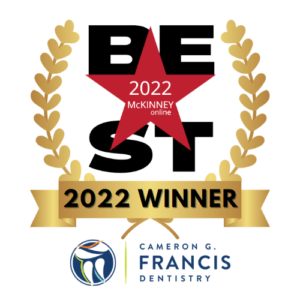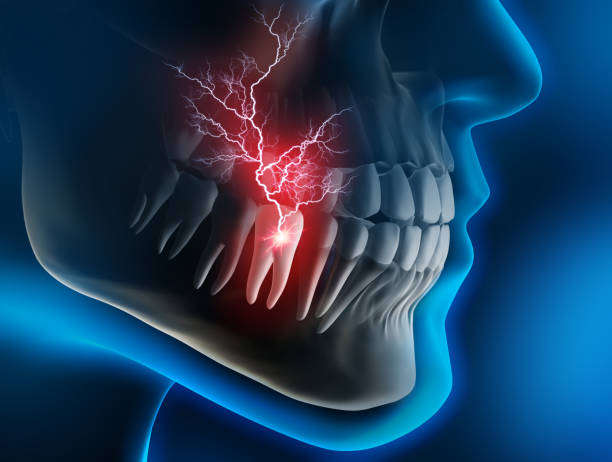Schedule Appointment

Don’t Panic! Here’s What to Do When a Dental Emergency Strikes
When it comes to dental emergencies, don’t panic! There are a few things that you can do to handle the situation until you can get to the dentist. In this blog post, we will discuss some of the most common dental emergencies and what you can do to remedy them. We will also provide some tips for preventing dental emergencies from happening in the first place. So don’t panic – read on for helpful information that could save your teeth!
Following a direct injury to the mouth or teeth, you should be seen by Dr. Francis as soon as possible. Usually, an x-ray of the involved tooth or teeth is needed to determine the extent of the injury. If a tooth has been fractured or broken, it is best to contact us quickly. Please call our office immediately to get scheduled. If you are unable to reach us, go to an alternate emergency facility, such as the emergency room or care center.
Handling Dental Emergencies
Any dental emergency, like an injury to the teeth or gums, can be potentially serious and should not be ignored. Ignoring a dental problem can increase the risk of permanent damage as well as the need for more extensive and expensive treatment down the road.
Here’s a quick summary of what to do for some common dental problems.
Toothaches
First, thoroughly rinse your mouth with warm water. Use dental floss to remove any lodged food. If your mouth is swollen, apply a cold compress to the outside of your mouth or cheek. Never put aspirin or any other painkiller against the gums near the aching tooth because it may burn the gum tissue. Call our office first thing to ensure you get one of the reserved emergency appointments that we hold open in our daily schedule.
Chipped/Broken Teeth
Save any pieces. Rinse the mouth using warm water; rinse any broken pieces. If there’s bleeding, apply a piece of gauze to the area for about 10 minutes or until the bleeding stops. Apply a cold compress to the outside of the mouth, cheek, or lip near the broken/chipped tooth to keep any swelling down and relieve pain. See your dentist as soon as possible.
Knocked-out Tooth
Retrieve the tooth, hold it by the crown (the part that is usually exposed in the mouth), and rinse off the tooth root with water if it’s dirty. Do not scrub it or remove any attached tissue fragments. If possible, try to put the tooth back in place. Make sure it’s facing the right way. Never force it into the socket. If it’s not possible to reinsert the tooth in the socket, put the tooth in a small container of milk (or cup of water that contains a pinch of table salt, if milk is not available) or a product containing cell growth medium, such as Save-a-Tooth. In all cases, see your dentist as quickly as possible. Knocked-out teeth with the highest chances of being saved are those seen by Dr. Francis and returned to their socket within 1 hour of being knocked out.
Extruded (partially dislodged) Tooth
See your dentist right away. Until you reach your dentist’s office, to relieve pain, apply a cold compress to the outside of the mouth or cheek in the affected area. Take an over-the-counter pain reliever (such as Tylenol or Advil) if needed.
Objects Caught Between Teeth
First, try using dental floss to very gently and carefully remove the object. If you can’t get the object out, see your dentist. Never use a pin or other sharp object to poke at the stuck object. These instruments can cut your gums or scratch your tooth surface.
Lost Filling
As a temporary measure, stick a piece of sugarless gum into the cavity (sugar-filled gum will cause pain) or use an over-the-counter dental cement. See Dr. Francis as soon as possible. If there is no pain involved, call first thing on Monday to schedule an
appointment.

Lost Crown
If the crown falls off, make an appointment to see your dentist as soon as possible and bring the crown with you. If you can’t get to the dentist right away and the tooth is causing pain, use a cotton swab to apply a little clove oil to the sensitive area (clove oil can be purchased at your local drug store or in the spice aisle of your grocery store). If possible, slip the crown back over the tooth. Before doing so, coat the inner surface with an over-the-counter dental cement, toothpaste, or denture adhesive, to help hold the crown in place. Do not use super glue!
Abscess
Abscesses are infections that occur around the root of a tooth or in the space between the teeth and gums. Abscesses are a serious condition that can damage tissue and surrounding teeth, with the infection possibly spreading to other parts of the body if left untreated.
Because of the serious oral health and general health problems that can result from an abscess, see your dentist as soon as possible if you discover a pimple-like swelling on your gum that usually is painful. In the meantime, to ease the pain and draw the pus toward the surface, try rinsing your mouth with a mild saltwater solution (1/2 teaspoon of table salt in 8 ounces of water) several times a day.
Soft Tissue Injuries
Injuries to the soft tissues, which include the tongue, cheeks, gums, and lips, can result in bleeding. To control the bleeding, here’s what to do:
- Rinse your mouth with a mild salt-water solution.
- Use a moistened piece of gauze or tea bag to apply pressure to the bleeding site. Hold in place for 15 to 20 minutes.
- To both control bleeding and relieve pain, hold a cold compress to the outside of the mouth or cheek in the affected area for 5 to 10 minutes.
- If the bleeding doesn’t stop, see your dentist right away or go to a hospital emergency room. Continue to apply pressure on the bleeding site with the gauze until you can be seen and treated.
Severe Pain
- Any injury to the gums or teeth can be very painful. In some cases, however, the cause of severe dental pain is not obvious. For example, pain that comes on suddenly may be caused by particles of food that got lodged in a cavity and have started to irritate the nerve inside the tooth. If you lose a filling or a crown, the nerve inside the tooth may be exposed, and you may feel severe pain when air or hot or cold substances touch the uncovered part of the tooth.
Pain that becomes more severe over a period of time is commonly caused by debris lodged under the gum. Popcorn is a common offender. Because the hard cellulose fibers of the popcorn kernel don’t break down, it can remain stuck between your gum and your tooth. The longer a food particle stays trapped between the gum and tooth, the greater the chance the gum will become irritated and infected and the pain will get worse. If you develop an infection called an abscess, it can become a serious health problem if left untreated.
Pain when you bite or chew, especially if it is accompanied by a foul odor and a bad taste, can be a sign of an abscess that needs immediate treatment.
What You Can Do
- First, call your dentist and make an appointment.
- In the meantime, here are a few steps you can take at home to try to relieve some of the pain:
- Take an over-the-counter pain reliever, such as ibuprofen (Advil, Motrin) or acetaminophen (Tylenol). However, be aware that you need to see your dentist. If you mask the pain with a painkiller and ignore it, the infection can spread and could become life-threatening.
- Rinse your mouth with warm water every hour or as needed to ease the pain.
- If the pain is caused by debris lodged in a cavity, washing the area may relieve the problem.
- Floss your teeth, then run a toothpick around the gum line. This may remove debris that’s lodged under the gum.
- If you’ve lost a filling or crown, dip a cotton swab in clove oil and apply it to the exposed part of the tooth. Clove oil, available in pharmacies and supermarkets, works well to relieve tooth pain. You also can use a topical anesthetic, such as Anbesol, also available in pharmacies and supermarkets.
- Putting an ice pack on your face over the area that hurts also may relieve the pain. Apply the ice for 10 to 20 minutes of every hour, as necessary.
- If you are traveling in an airplane, the change in pressure when the plane takes off or lands may make you feel more uncomfortable. You should get dental treatment before traveling by air.
What Dr. Francis Will Do
Even when dental problems cause a lot of pain, the problems and the treatments often are relatively simple if you seek help right away.
If you have a cavity, Dr. Francis will clean out any debris, remove the decayed part of the tooth, and place a filling. Once the inner part of the tooth is protected, the pain will usually disappear immediately.
If your problem is related to debris under your gums, Dr. Francis will use special instruments to remove the debris. If you have an infection, you may be given a prescription for antibiotics and pain medicine. If an antibiotic is prescribed, it is important that you take it as directed until you have finished all the medication.
An abscess in the tooth or gum may require more extensive treatment, such as drainage of the abscess, root canal treatment or tooth extraction.
Please contact our office or use our emergency line if you have any emergency that cannot wait until the next business day.
Feel free to call or email us with any questions, and please visit our website at https://mckinneydentaloffices.com to schedule your next visit.
Our team is there to help with your dental health.
Cameron G. Francis, DDS


